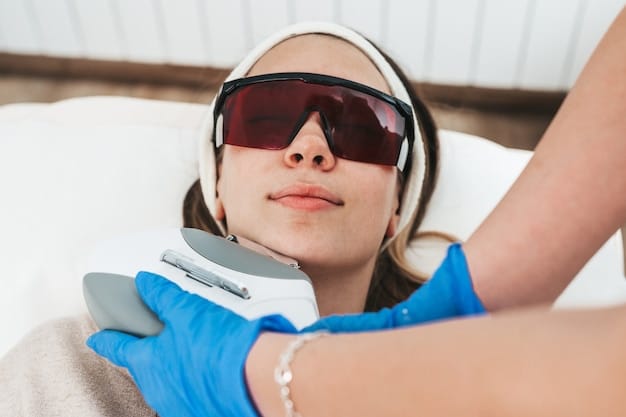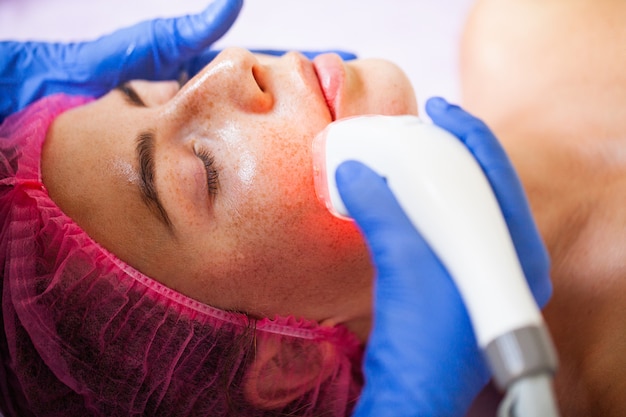Introduction
Q-Switch laser treatment is a game-changer for anyone dealing with stubborn pigmentation, acne scars, or unwanted tattoos. It’s a go-to option because it’s non-invasive, quick, and doesn’t leave you hiding indoors for weeks.
But let’s be honest—no treatment is completely risk-free. While Q-switch lasers are safe, they can still cause some side effects. The good news? Most of them are mild and temporary. Knowing what to expect (and how to deal with it) makes the whole process much more manageable.
Suppose you’re considering Q-Switch Laser Treatment in Islamabad, Pakistan. In that case, Dr. Taskeen Iqbal is known for delivering safe and effective results, ensuring you get clear skin with minimal hassle.
What is Q-Switch Laser Treatment?
This treatment uses short, intense bursts of laser energy to break up pigmentation or ink particles in the skin. Your body then clears them naturally over time. Think of it like a high-tech eraser that fades dark spots, scars, or tattoos without damaging the surrounding skin. Q-Switch ND YAG Laser Treatment: A Simple Guide to Skin Rejuvenation explains how this advanced technology works to refresh and revitalize your skin.
It’s commonly used for:
- Pigmentation issues – Melasma, sunspots, and uneven skin tone.
- Tattoo removal – Even stubborn, multi-coloured tattoos.
- Acne scars – Helps fade dark marks left behind.
- General skin brightening – Gives dull skin a fresher look.
The best part? It’s precise, meaning only the target area is affected while the rest of your skin stays untouched.

How It Works
The laser sends rapid energy pulses deep into the skin, breaking pigment or ink particles into tiny fragments. Your body’s natural processes then clear these away over time.
Some people see results after just one session, but multiple treatments are needed for deeper pigmentation or tattoos. It all depends on your skin type and the concern you’re treating.
Common Side Effects
For most people, side effects are nothing more than a minor inconvenience. Here’s what you might experience:
Redness and Swelling
Right after treatment, your skin might look a little red or feel slightly puffy. This is completely normal and usually fades within a few hours. A cool compress can help speed up the process.
Skin Sensitivity
The treated area may feel warm, like a mild sunburn. Some people describe it as a slight tingling sensation. A gentle, fragrance-free moisturizer can help calm things down.
Dryness and Peeling
Your skin might start flaking a little as it heals. That’s a good sign—old, pigmented skin cells are making way for fresh, new ones. Just don’t pick at it. Keeping the area moisturized will help.

Mild Discomfort
You might feel a slight stinging sensation during the procedure if you have a low pain tolerance. Most people compare it to tiny rubber band snaps. If that sounds unpleasant, don’t worry—numbing cream can be applied beforehand. Q-Switch Laser Treatment Benefits: Rejuvenate Your Skin Effectively highlights how this treatment not only targets skin concerns but also promotes overall skin rejuvenation.
Less Common Side Effects
Not everyone gets these, but being aware of them is good.
Temporary Darkening or Lightening
Some people notice that the treated area looks darker before it gets lighter. That’s just your body processing the pigment. On the flip side, some might see lighter patches. Both usually even out over time, especially with proper sun protection.
Blisters or Burns
This isn’t common, but small blisters may form if the laser settings are too strong or aftercare isn’t followed correctly. Keeping the skin clean and moisturized helps prevent complications.
Scarring
Rare, but possible. This usually happens if you scratch or pick at healing skin. Resist the urge—it’s not worth risking a scar.
Allergic Reactions
Some people experience itching or mild swelling, especially if they have sensitive skin. Before starting treatment, let your dermatologist know if you have a history of skin allergies.

What Affects Side Effects?
Your skin’s reaction depends on several factors:
- Skin type – Darker skin tones may be more prone to pigmentation changes.
- Sensitivity level – You might notice more redness if your skin reacts quickly.
- Laser intensity – Higher settings can lead to stronger reactions.
- Aftercare routine – Taking care of your skin correctly speeds up healing.
How to Reduce Side Effects
You can’t always prevent side effects, but you can minimize them with the proper prep and aftercare.
Before Treatment
- Stay out of the sun – Sun exposure makes skin more sensitive to lasers.
- Pause strong skincare products – Avoid retinol, exfoliants, and acids a week before.
- Keep your skin hydrated – Well-moisturized skin heals faster.
After Treatment
- Apply moisturizer – A simple, gentle one will help keep skin comfortable.
- Wear sunscreen – SPF 50+ is a must to prevent pigmentation issues.
- Avoid heat and sweating – Skip intense workouts, saunas, and hot showers for a day or two.
- Hands off! – Don’t pick at peeling skin—it’ll heal faster.

Who Should Avoid Q-Switch Laser Treatment?
While safe for most people, some should think twice before getting this treatment.
- Pregnant or breastfeeding women – Hormonal changes can affect healing.
- People with active skin infections – The laser can make infections worse.
- Those prone to keloid scars – If you scar easily, consult a dermatologist first.
- Individuals on certain medications – Some drugs make skin more sensitive to lasers.
Choosing the Right Specialist
The right dermatologist makes all the difference. Q-Switch laser treatment requires precision, so experience matters. A skilled professional will adjust the settings based on your skin type and condition, reducing risks and ensuring the best results.
Dr. Taskeen Iqbal, a leading dermatologist in Islamabad, specializes in Q-Switch laser treatments tailored to your skin’s needs. With expert care, you can achieve clearer, brighter skin with minimal downtime.

Final Thoughts
Q-Switch laser treatment is one of the most effective ways to eliminate pigmentation, acne scars, and unwanted tattoos. While side effects like redness, peeling, and sensitivity are typical, they’re usually minor and temporary.
With proper aftercare, you’ll heal quickly and start seeing visible improvements. Suppose you’re looking for a Q-Switch laser treatment in Islamabad. In that case, Dr. Taskeen Iqbal offers expert care to help you confidently achieve smooth, even-toned skin.
FAQs
What are the disadvantages of Q-Switch laser?
Q-Switch laser can cause temporary redness, swelling, and mild peeling. In rare cases, pigmentation changes or slight scarring may occur if aftercare isn’t followed. Dr. Taskeen Iqbal ensures personalized treatment to minimize risks and enhance results.
Are there adverse effects of laser therapy?
Laser therapy may lead to sensitivity, temporary darkening or lightening of the skin, and mild discomfort during treatment. Serious side effects are rare when performed by an experienced specialist. Dr. Taskeen Iqbal provides expert care to ensure safe and effective laser treatments.
What are the side effects of Q-Switch laser for facial hair?
Some people experience mild redness or slight hair thinning in the treated area. The laser mainly targets pigmentation, so significant hair loss is unlikely. Dr. Taskeen Iqbal tailors treatments to your skin type, ensuring optimal results.
What to avoid after a Q-Switch laser?
Avoid sun exposure, harsh skincare products, and excessive heat like saunas or hot showers for a few days. Keeping the skin moisturized and using sunscreen helps with healing. Dr. Taskeen Iqbal provides detailed aftercare guidance for the best recovery.
How many sessions of Q-Switch are required?
The number of sessions depends on the skin concern—pigmentation may need 3-5 sessions, while tattoo removal could take more. Treatments are spaced weeks apart for the best results. Dr. Taskeen Iqbal customizes treatment plans based on your specific needs.

